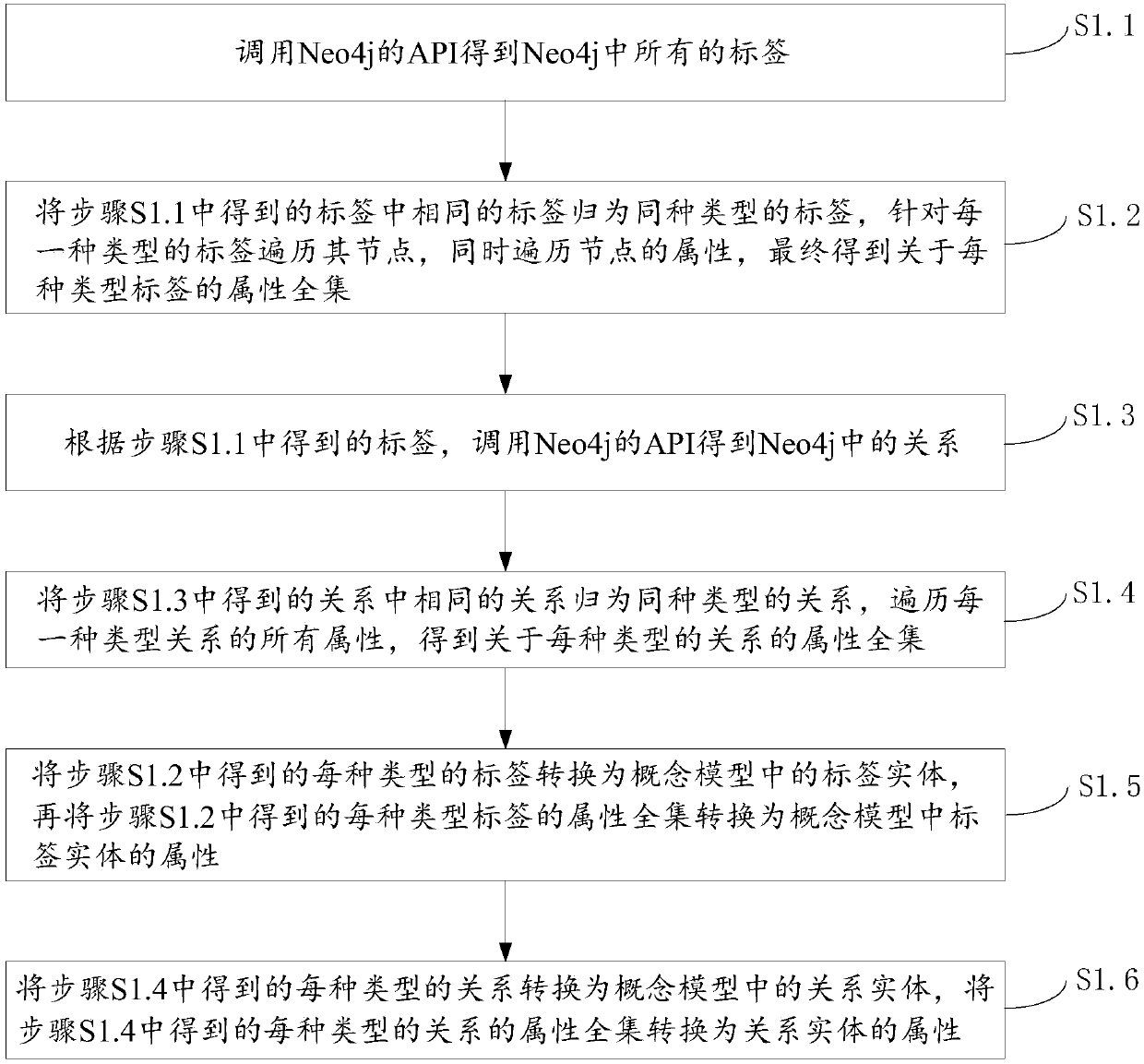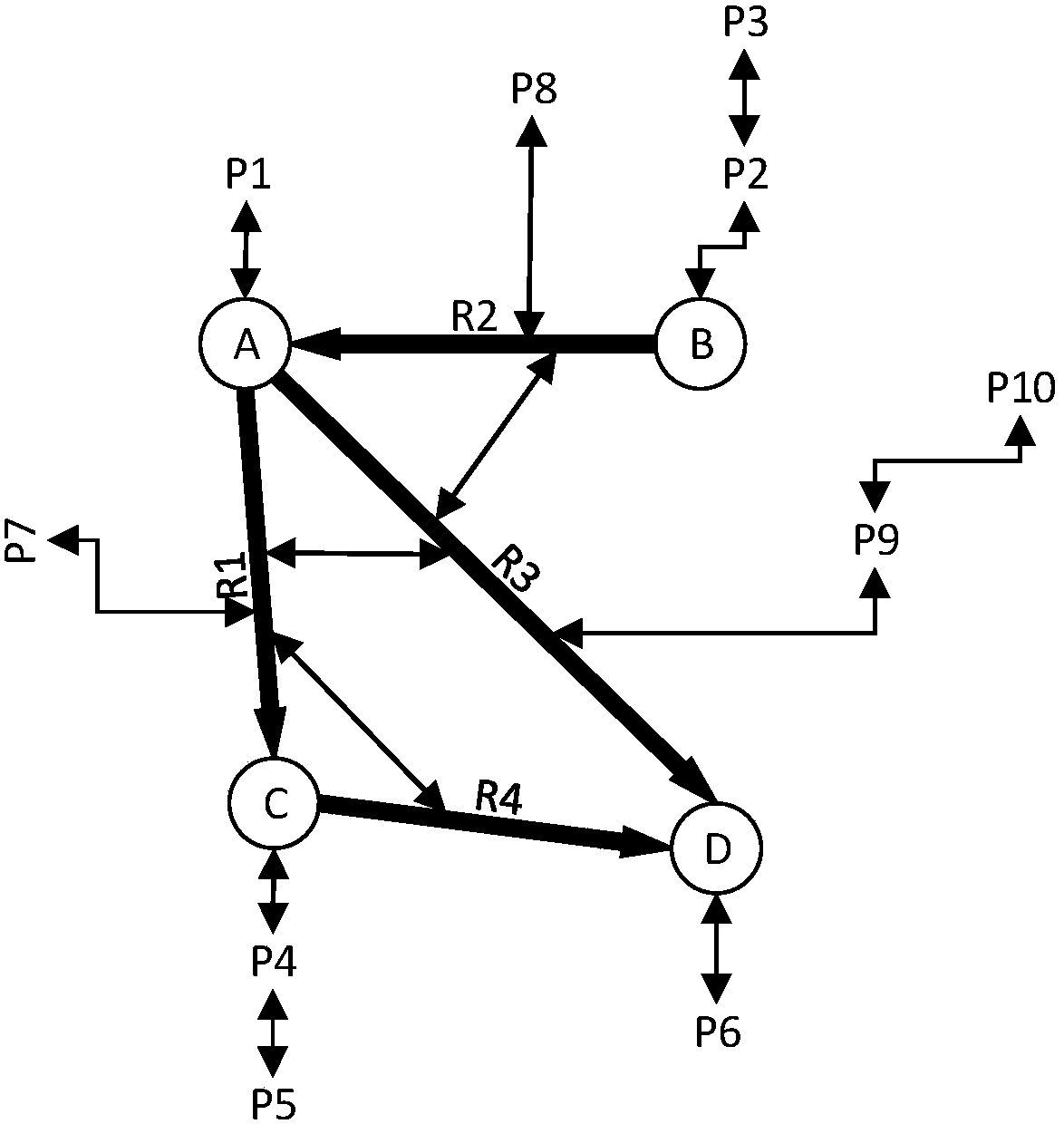A model conversion and data migration method from neo4j to relational database
A model conversion and database technology, applied in database models, relational databases, database design/maintenance, etc., can solve problems such as difficulty in operation, inability to achieve optimal performance, lack of visual display, etc., and achieve accurate and easy-to-operate data migration. Effect
- Summary
- Abstract
- Description
- Claims
- Application Information
AI Technical Summary
Problems solved by technology
Method used
Image
Examples
Embodiment 1
[0079] Here is an example to illustrate the method for extracting the conceptual model of Neo4j in the above step S1:
[0080] Such as Figure 4 As shown, there are three nodes in the graph, namely Sally, John, and NW. The labels of Sally and John are Person, and the label of NW is Book. There are 3 relationships in the example, among which there is a Friend_Of relationship between Person and a Has_Read relationship between Person and Book. Both nodes and relationships contain some properties. It can be seen that each node is equivalent to a record in a relational database, and each label is equivalent to a table in a relational database. Although each node may have many kinds of associated relationships, they can be classified according to the label of the node.
[0081] Step a: First call the Neo4j API to get all the tags in Neo4j, namely Person and Book.
[0082] Step b: For the Person tag, traverse the two nodes Sally and John, and then traverse all attributes of Sally ...
Embodiment 2
[0089] Here is an example to illustrate the model conversion method from Neo4j to a relational database. The specific method is as follows:
[0090] Step Ⅰ: Use the above method to extract the conceptual model of Neo4j, and get the following Image 6 The conceptual model of the ER diagram is shown. These include label entities of the Person entity and the Book entity with the subscript Label, and the relationship entities of the Friend_Of entity, Has_Read entity, and Has_Write entity with the sublabel Relationship; the Friend_Of entity and the Has_Read entity are relationship entities that contain attributes, and Has_Write Entities are relational entities that do not contain attributes.
[0091] Step Ⅱ: Choose to convert all entities and attributes in the extracted Neo4j ER graphical conceptual model.
[0092] Step Ⅲ: Convert the Friend_Of entity and Has_Read entity containing attributes in Neo4j's ER graphical conceptual model into tables (Tables) in the relational database E...
PUM
 Login to View More
Login to View More Abstract
Description
Claims
Application Information
 Login to View More
Login to View More - R&D
- Intellectual Property
- Life Sciences
- Materials
- Tech Scout
- Unparalleled Data Quality
- Higher Quality Content
- 60% Fewer Hallucinations
Browse by: Latest US Patents, China's latest patents, Technical Efficacy Thesaurus, Application Domain, Technology Topic, Popular Technical Reports.
© 2025 PatSnap. All rights reserved.Legal|Privacy policy|Modern Slavery Act Transparency Statement|Sitemap|About US| Contact US: help@patsnap.com



